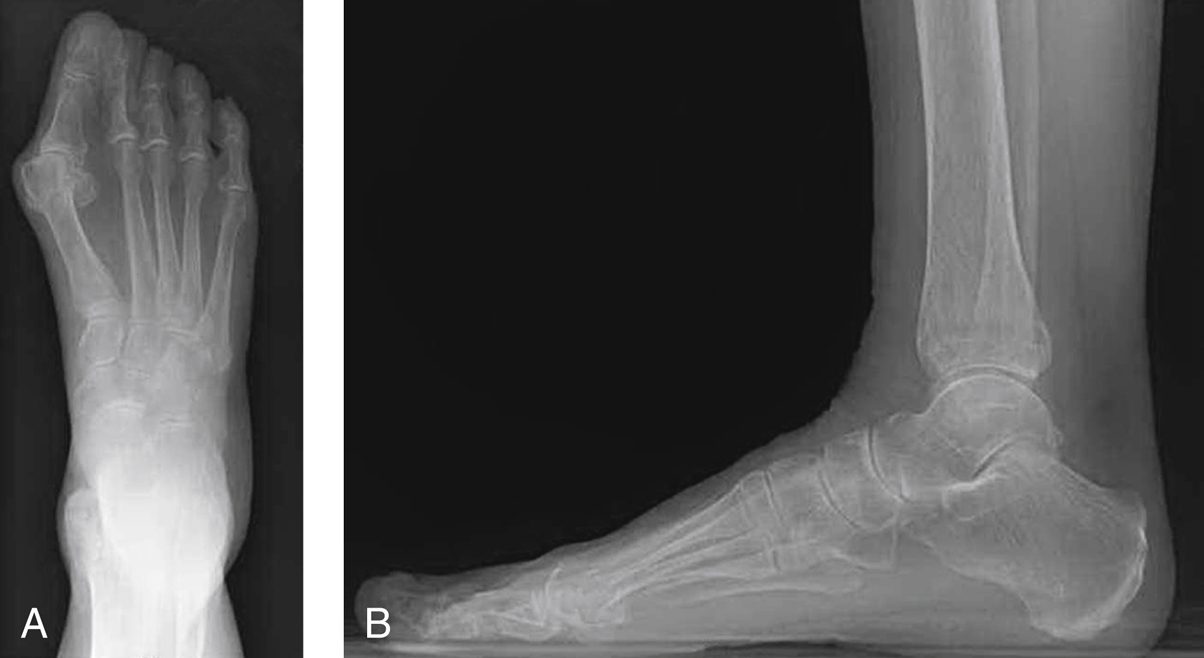Arthrodesis of the Hallux Metatarsophalangeal Joint
Patient Selection
Indications
Hallux rigidus
Hallux valgus with arthritis
Failed surgery of hallux
Neuromuscular conditions
Inflammatory disease
Arthritis
First metatarsophalangeal joint subluxation, dislocation, or instability
Contraindications
Infection
Malignancy
Tenosynovitis
Osteochondral defects
Alternative Treatments
Resection arthroplasty with cheilectomy
Interposition graft arthroplasty
Hemiarthroplasty
Synthetic cartilage implant (unable to address significant deformity with this option)
Total joint arthroplasty; evidence shows arthrodesis has better long-term results, improved gait mechanics versus total joint arthroplasty
Preoperative Imaging

Figure 1Preoperative weight-bearing AP (A) and lateral (B) radiographs show a right foot. The metatarsophalangeal (MTP) angle is approximately 30°, the intermetatarsal angle is approximately 13°, and the inclination angle of the first metatarsal is approximately 30°. There are signs of first MTP joint arthritis as well: joint space narrowing, sclerosis, osteophytosis, and mild sclerosis. The MTP joint also is subluxated, and the metatarsal head is flattened.
Weight-bearing radiographs of foot in three planes (Figure 1)
Evaluate proximal aspect of foot; proximal deformity or pathology may affect surgical decisions distally
Can correct up to a 13° intermetatarsal angle with fusion
Use intermetatarsal angle, hallux valgus angle, angle of inclination of first metatarsal relative to floor in surgical planning
Procedure
Special Equipment and Implants
Radiolucent table
Tourniquet
Mini-fluoroscopy
Microsagittal saw or Hoke osteotomes
Low-profile plates
Stay updated, free articles. Join our Telegram channel

Full access? Get Clinical Tree


